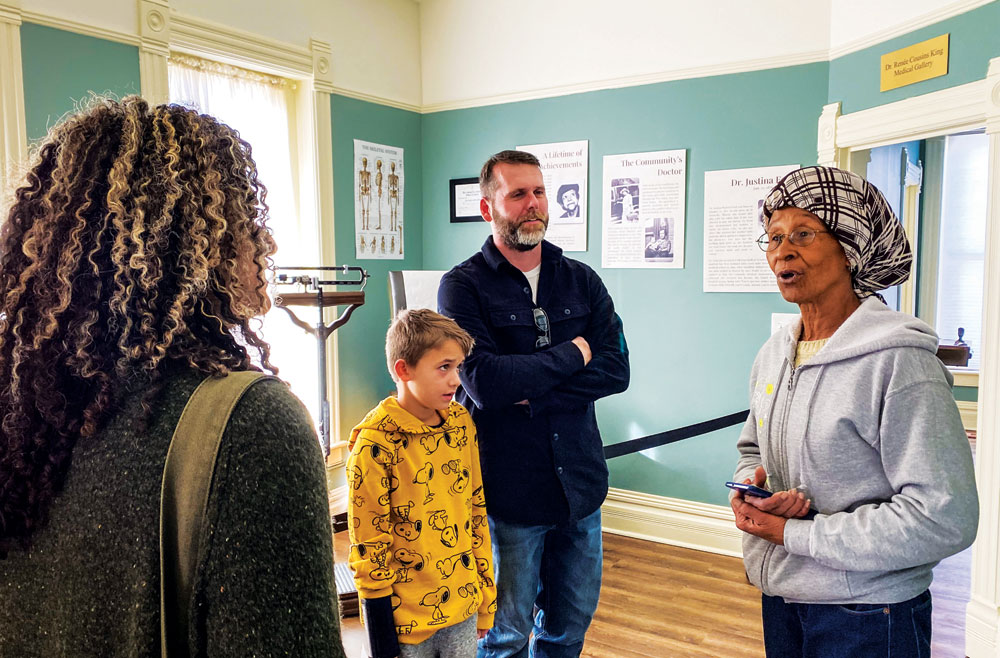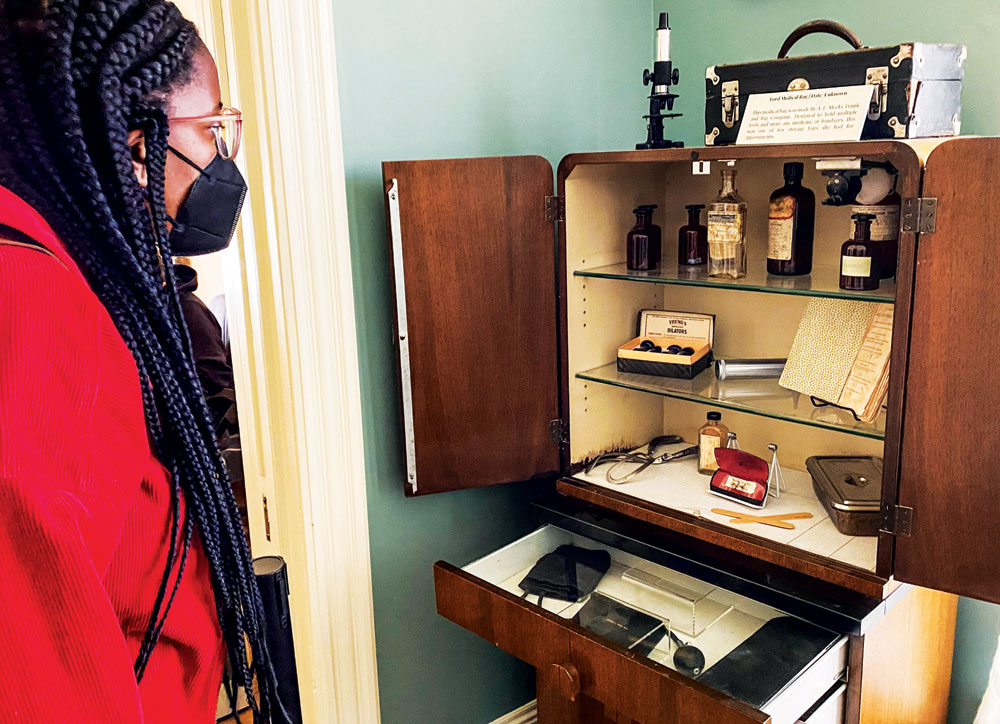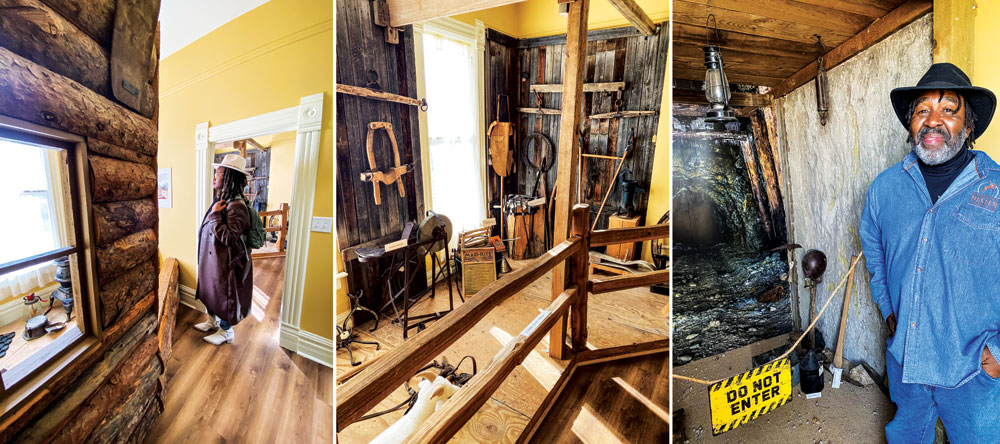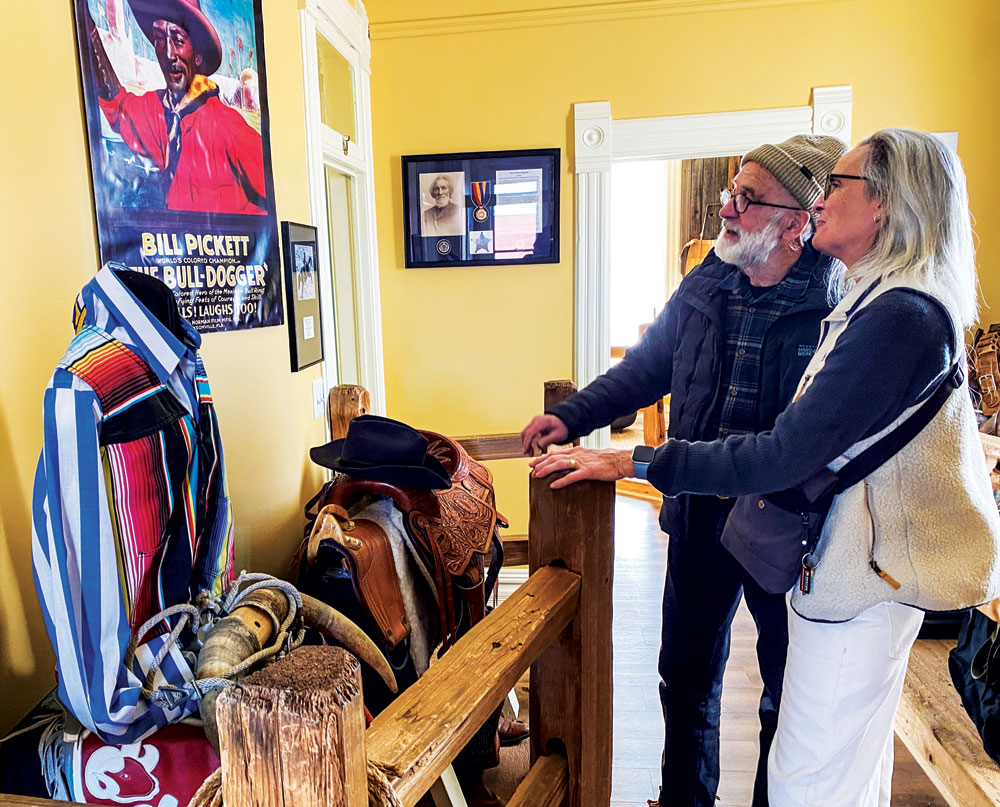
Volunteer and board member Eleise Clark greets visitors to the newly reopened Black American West Museum & Heritage Center in the Five Points neighborhood. It had been closed for three years for extensive renovations. The museum’s mission is to tell the stories of African Americans who helped settle and develop the American West.
The medical office where Denver’s first female African American physician treated patients. A saddle ridden by Bill Pickett, the famous Black cowboy and rodeo champion. A uniform worn by a Buffalo soldier in the all-Black 9th Cavalry stationed at Fort Garland in southern Colorado. These are just a few of the exhibits on display in the recently reopened Black American West Museum & Heritage Center in the Five Points neighborhood of Denver.
The museum’s mission is to tell the under-told stories of how African Americans helped settle and develop the American West, says the museum’s board president Daphne Rice-Allen. “Mainstream history does not portray a positive image of African Americans, Native Americans, Latinos, and Asian Americans in the West. But they were all important players in the development of the western United States.”

Visitor Zenzele Barnes looks at a display of medical tools used by Denver’s first female African American physician, Dr. Justina Ford.
Board member Earnest Reese, who grew up in Denver, says that as a child he was completely unaware of the contributions made by African Americans in settling the West. “I didn’t even know Black cowboys existed. When I was growing up, you never saw Black cowboys on TV or in the movies.” In fact, historians now believe that a quarter of all cowboys in the West were African American.
The museum was started 52 years ago by Paul Stewart, a professional storyteller who toured Colorado schools to explain the rich cultural heritage of Blacks in the West. He had begun collecting materials to help tell those stories and soon realized that he had accumulated enough items to create a permanent display. He opened the museum in the former home and office of Dr. Justina Ford, a physician who arrived in Denver in 1902 but who wasn’t allowed to practice in a hospital because she was Black. Throughout her career, she treated tens of thousands of patients and delivered nearly 7,000 babies. Stewart filled her former home with his collection of historical items and educational exhibits to teach visitors about the influence of African Americans on the culture of the American West.

Left: The remodeled museum features new and restored exhibits, such as this homesteader’s cabin filled with furniture and dishes from the late 1800s. Middle: The farm and ranch room helps to showcase how African Americans homesteaded the West. Right: Museum board member Earnest Reese stands in front of the newly created mining exhibit that he helped to construct.
The museum closed down for renovation just prior to the pandemic in 2020. Thanks to $300,000 in grants, the museum’s exterior was completely refurbished, new windows and flooring were installed, the interior was repainted, and displays were updated. A new exhibit featuring the Five Points neighborhood was also created. Dubbed “the Harlem of the West,” Five Points thrived in the 1920s and 30s with Black-owned businesses, jazz clubs, and two Black-owned newspapers. The renovation also included the construction of a mining display that allows visitors to peer into the depths of a mine, and a farming and ranching display located in the corner of a recreated barn.
The newly remodeled museum is open on a limited basis on Saturdays from 10am–2pm, and all visitors must pre-register for an hour-long slot. The museum operates with limited funding and an all-volunteer staff. Rice-Allen says the museum is applying for additional grants that she hopes will allow the museum to expand its hours. “This museum has an important role to play and it’s important that it survives.”

Wayne Cartwright and Susan Allen, visiting from California, read about Bill Pickett, one of the West’s most famous Black cowboys.
The museum also hopes to soon resume its reenactment program that is based on the work that Paul Stewart initiated in schools. Volunteers conduct research, wear costumes, and tell the stories of famous African Americans in the West. Eleise Clark has volunteered with the museum for 30 years and coordinates the program. “The reenactment program brings history to life. You get to meet Tuskegee airmen or Dr. Justine Ford. It allows children to meet characters from history up close and personal.” Other characters who have been portrayed include Barney Ford—an escaped slave who became a wealthy entrepreneur in Denver—and Bass Reeves, a former slave who became one of the first Black U.S. Marshalls in the American West.
In addition to the museum in Five Points, the Black American West Museum & Heritage Center hopes that it can raise enough money to restore parts of Dearfield, Colorado. Dearfield was the largest Black homesteading settlement in Colorado. Located 30 miles east of Greeley, it was founded in 1910 by a successful businessman from Boulder named O.T. Jackson. “They named it Dearfield because the land was so dear to them,” says Clark. By 1920 the town boasted nearly 300 residents, two churches, and a café. But after the Great Depression and the Dust Bowl, residents abandoned the townsite and it became a ghost town. Just a few deserted buildings remain.
For more information about the museum and to reserve a timeslot to visit, go to www.bawmhc.org.
Photos by Mary Jo Brooks



0 Comments